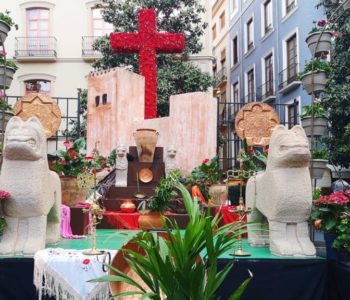 ¡Olé!
¡Olé!
The Day of the Cross
The Day of the Cross: My favourite of Granada’s festivities
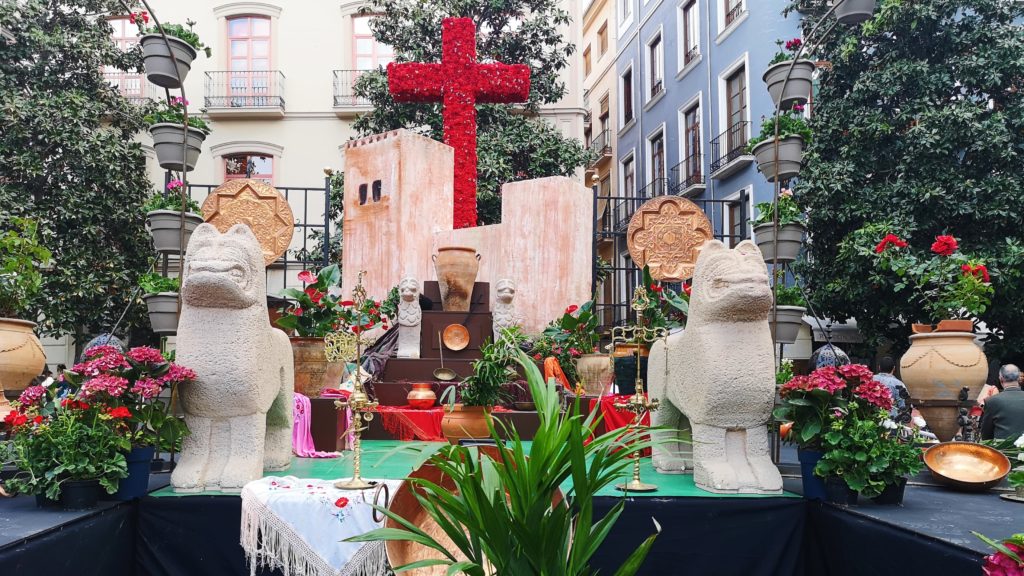
Once a year, I dress up to the nines, thread a rose through my hair, grab my hand-painted fan, and head out to meet my friends. No, it’s not a masked ball, but Granada’s Día de la Cruz, or Day of the Cross.
Well, what’s the Day of the Cross all about? What do we get up to? And why do I look forward to it so intensely every year?
Falling on the 3rd of May, it was originally conceived as a celebration of the Holy Cross and a Christian holiday right across the Christian world. However, little by little, it was abandoned and finally removed from the Church’s calendar. In certain places, it evolved into a popular festival, while retaining its religious name and some connotations. In Andalusia, the festivity, which arrives with the spring bloom, is arguably most passionately celebrated in Cordoba and Granada.
It was back in the 17th century that the Day of the Cross really took off in Granada. At first, neighbours simply gathered around a cross decorated with flowers to eat, drink and chat together. With growing enthusiasm, these convivial meetings began to be highly organized, with neighbourhood committees competing to build the most beautiful cross and setting, and inviting the rest of the town to come and gush over their craftsmanship and artistry. Today, the town council runs a fiercely contended competition for the most beautiful cross. “Cross, cross, on the wall, who is the fairest of them all?” And, as with most beauty contests, there are several categories to win, according to the specific setting, be it a patio, restaurant, school, or so on.
Of course, there are also the favourites, the darlings of jury and bookmakers year in, year out!
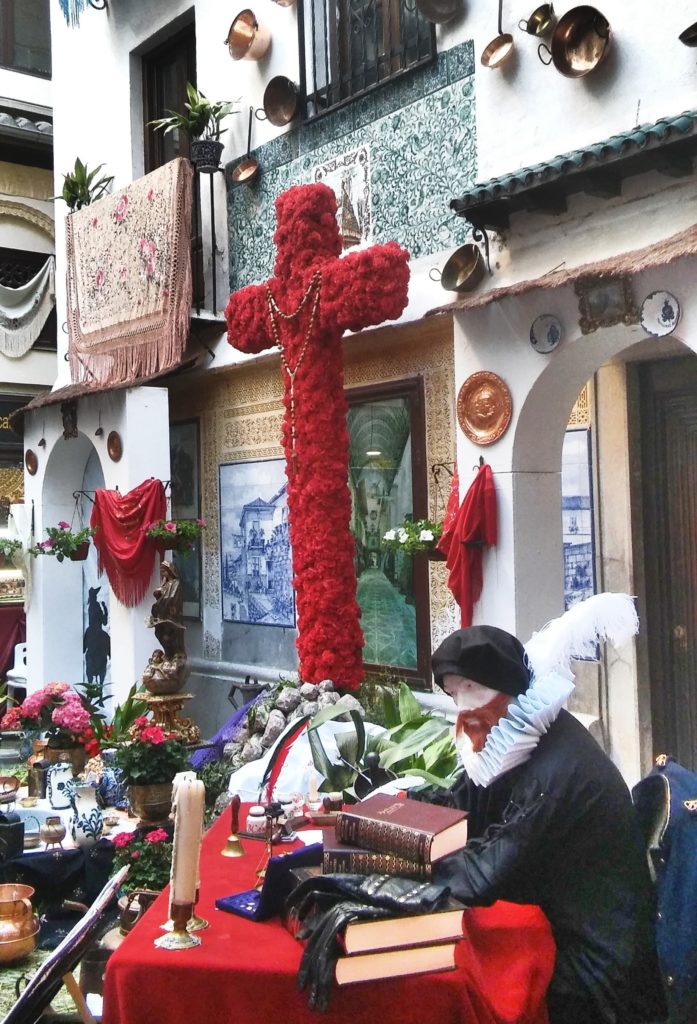
As the results come in, there’s always some disappointment, voices raised to denounce the jury’s favouritism, and then it all gets lost in the ensuing festivities, and the controversies are all but forgotten until the following year.
But I digress … The Day of the Cross is much more than a beauty pageant for flowery crosses, it is hours and hours of preparation that brings people together in good humour, not only to erect the cross, but to build a kind of altar, and set at its feet all manner of Andalusian arts and crafts, all to the tune of the finest flamenco music.
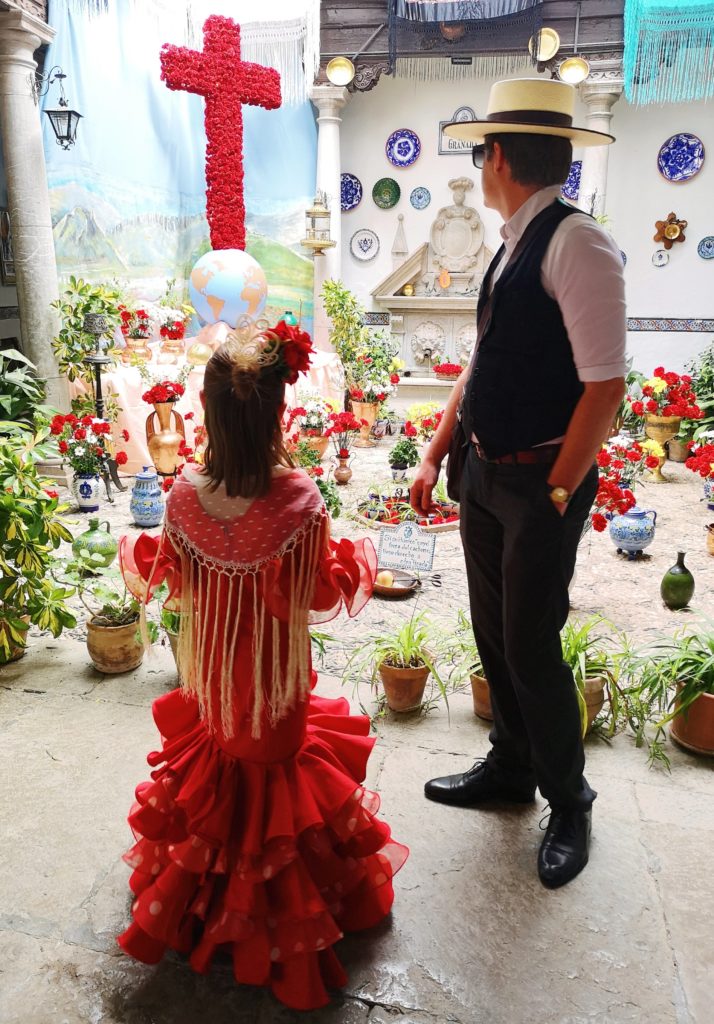
A delectable anecdote
At my first Día de la Cruz, as green as I was, I was surprised to find an apple with stabbed with scissors below every single cross, thinking, “What does an apple and a pair of scissors have to do with the cross?” Well, in Andalusian dialect, the word for “apple” is “pero”, but “pero” also means “but”! So the metaphor of the apple and the scissors is to symbolise the cutting short of any sort of criticism of the cross, such as “It’s pretty … but … then, in place of this, I would have done that …”, etc.
Apart from the apple, there’s something else that can’t be overlooked on the 3rd of May. Since Granada is the land of tapas, we don’t simply go out to eat in a restaurant. We go out to “tapear”. The food on offer is extremely varied, and the price of about two Euros fifty for a drink and a tapa drives consumption. But, on the day of the festivity, all self-respecting bars will serve you a handful of broad beans to sink your teeth into. And as it is the peak harvest season of this particular legume, there are plenty to go round!
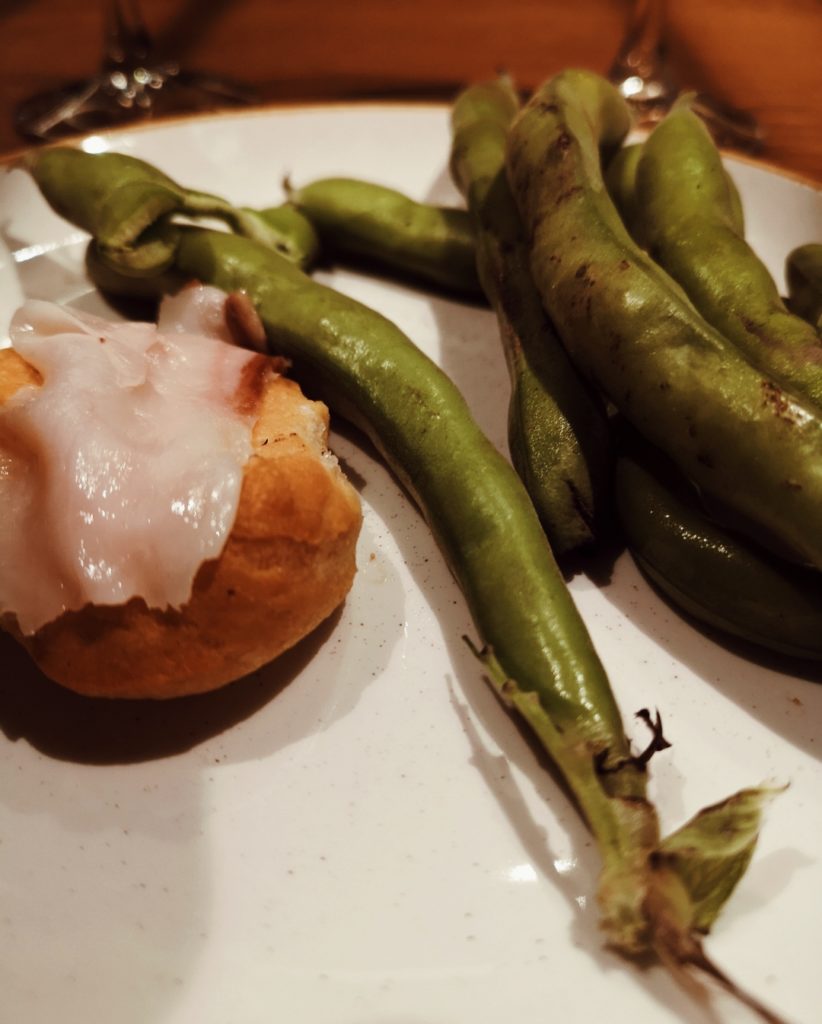
However, surely the true stars of the Día de la Cruz are the women strutting around in their magnificent flamenco dresses, afraid to eat or drink too much, just in case the stitches and laces begin to work themselves loose.
In Granada, the Day of the Cross is a real fashion show. Forget Paris, Milan and New York! Here, the avant-garde of flamenco fashion is played out in all its glory.
Ostentation is a must! Bright colours, small or large polka dots, vibrant flowers, and a dash of lace. Just don’t be shy. And that’s what I love! It’s a femininity that flourishes and blooms. You might find that corny or overblown … but only until the day you find yourself taking part. For me, that was the 3rd of May 2015, and there’s been no turning back. That’s when I really felt Granada as my city and my home. Dressed as a local, I became one. I was the one tourists stopped to take a picture of. I had crossed the mirror.
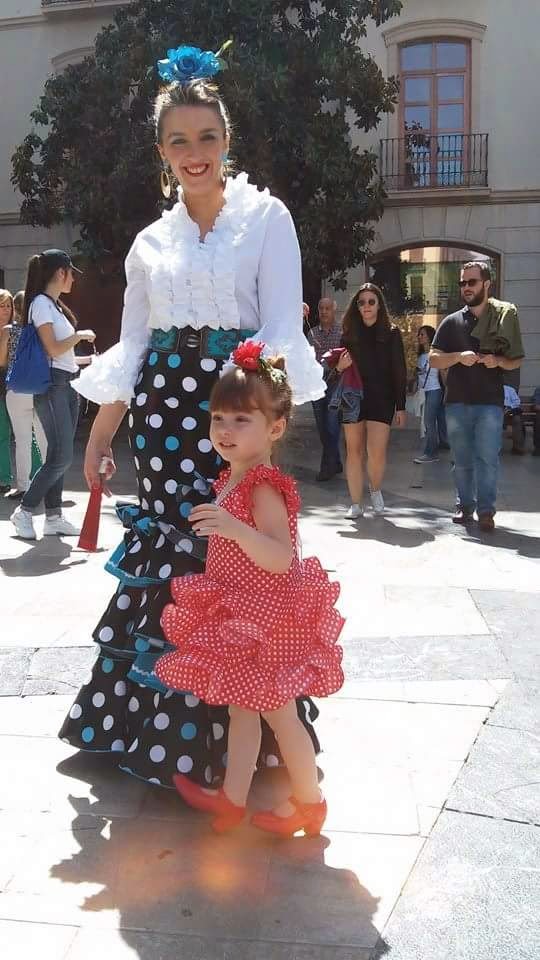
For more information, here are the official tourism websites of:
Feel free to comment, let me know what you think, ask for recommendations, and share this article!